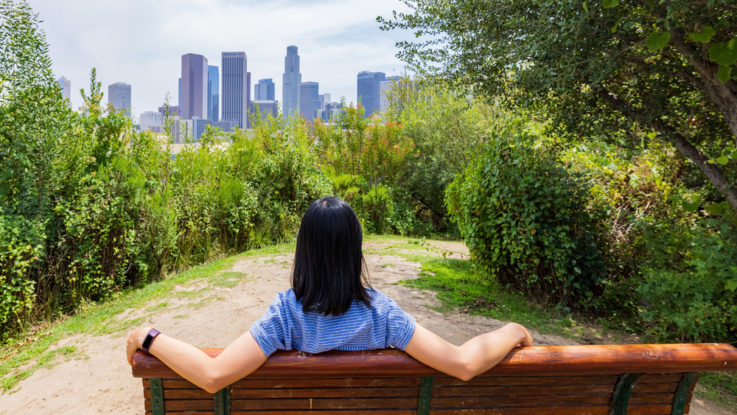
Arup and C40 have released the report ‘Urban Rewilding: the Value and Co-benefits of Nature in Urban Spaces’ which defines urban rewilding as “restoring natural habitats and their processes in urban spaces, working towards a state of human-nature coexistence”. The report has the aim of celebrating and sharing best practices from urban nature initiatives from around the world. Their research has shown that restoring natural habitat in cities can help to reduce impacts of climate change and improve the mental health and wellbeing of city residents.
Some of these best practices include:
- London, England’s Wild West End initiative is adding spaces for wildlife within dense areas of central London. Since the project’s inception, a network of green roofs, walls, planters and small parks have been designed across the city to encourage pollinators, birds and bats to return to urban spaces;
- Montréal, Canada is rehabilitating a former limestone quarry and landfill site into a 153 hectare park by 2025. The rehabilitation of the park has succeeded in encouraging the return of birds, insects, and small amphibians;
- Delhi, India has established several “biodiversity parks’’ which have helped to improve water and air quality, helped with flood water management and carbon sequestration, and lowered ambient temperature levels in the city;
- Lagos, NIgeria is using community-driven vertical gardens to lower temperature levels in the city, increase biodiversity, and provide alternative food sources; and
- São Paulo, Brazil is working to restore some of the rainforest and savannah habitats that existed before the city was built. Local government and community groups are working together to create “pocket forests” (“Florestas de Bolso”) across the city.
“We think of cities as concrete jungles – as spaces for humans, with nature pushed aside. But re-integrating nature into human spaces is crucial to reversing biodiversity loss and tackling climate change,” said Lily Ginsberg-Keig, sustainability and climate change expert at Arup. “There are inspiring examples of cities finding creative ways to make this happen – from green corridors and pocket forests to wetlands. But we must do more, so our research shows cities how to create urban rewilding projects that lead to improved biodiversity, better health and wellbeing, and help adapt to and mitigate climate impacts.”